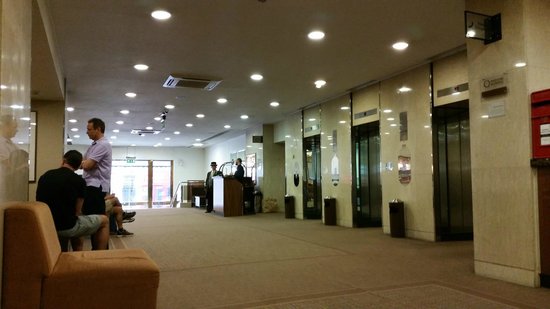
By Debbie Carson, Associate Editor
Property management systems account for the largest portion of the budget for hotel technology investments. But before making a purchase decision, hoteliers want to know how well their current capabilities measure up.
Are next-generation PMS solutions revolutionary in terms of the benefits they deliver with respect to guest experience management, operational efficiency, etc., relative to the current system in place? Or, like each successive release if the iPhone, are the technology enhancements fairly incremental in nature relative to the current system?
Following are a just a few common features of next-generation PMS solutions to keep in mind when doing a compare-and-contrast exercise between a new PMS and the hotel’s current technology capabilities.
Registration, guest accounting and reservations management capabilities
Beyond managing core tasks like reservations, check-ins and check-outs, most next-generation PMS systems have features to capture and deliver guest messages and wake-up calls, although mobile phones have made these features practically obsolete. Likewise, once-crucial interfaces to call accounting and movie-billing systems are becoming decreasingly relevant in the age of BYOD (bring-your-own-device).
Technology innovation is improving capabilities around check-in and check-out notifications, guest information lookup, guest access control, and acceptance of charge postings, adding things such as Wi-Fi distribution platforms, parking access systems and self-service kiosks to the evolving demands imposed by electronic door locks, PBX, POS, and in-room entertainment systems.
Guest accounting functionality generally includes tools to manage guest folios and charge routing along with bookkeeping and financial reporting features related to cashiering (managing deposits, settlements, adjustments, currency exchange, etc.), accounts receivable (direct billing, invoicing, etc.), and night auditing.
Housekeeping management features
Next-generation PMS capabilities can improve the housekeeping aspect of the guest experience, ensuring rooms are cleaned effectively, in a timely manner, and even based on the wants and needs (e.g., hypoallergenic pillows only) — and value — of individual guests. After all, different guests and different rooms have different housekeeping requirements.
Some next-generation PMS capabilities can assign the services based on available staff and amount of work to calculate the most effective way to assign staff. Instead of an attendant relying on a paper chart, typically printed early in the morning, the PMS or integrated third-party system automatically balances room attendant assignments based on stayovers vs. check-outs, room type considerations, number of registered guests, expected arrival time of guests with pre-assigned rooms due to their VIP status or online advance check-in of arriving guests and multiple other factors, even taking room-to-room travel time into account.
Mobile PMS capabilities
Employee-facing mobile capabilities, including check-in and check-out, enable staff to better service guests on the go and can improve the overall guest experience. The ability to gain access to key features enabled by a PMS from tablets and other mobile devices ranks as an important buying consideration.
In fact, according to Starfleet Research, 86% of hoteliers, agree that employees at all levels and across all parts of the organization require mobile access to be most effective in their jobs. This includes managers who need to be able to remotely monitor operational performance and track productivity.
Point-of-sale features
Next-generation systems include basic built-in POS capabilities for processing guest charges such as sundry items, postage stamps, and transportation and attraction tickets. They are also increasingly relied on to post flat, recurring charges for things such as wi-fi service, parking, meal plans, and fitness club fees for both in-house guests and local house accounts.
Many systems also integrate with next-generation POS systems, which in and of themselves can have a profound impact on guest satisfaction and hotel profitability. The technologies encompass both software and hardware — most notably, the introduction of tablets, which, in food and service settings, can put full POS terminal functionality in the palms of servers’ hands, enabling tableside ordering and payment processing.
The growing need to accept new payment methods, including chip credit cards and e-wallet apps, as well as data security compliance, are other reasons many operators are upgrading their hotel POS capabilities.
Performance reporting capabilities
Today, having visibility into all of the key drivers of hotel performance is not just an operational necessity but a strategic imperative. Every hotelier is sitting on a mountain of data related to guests, rooms, facilities, employees and various operational and financial aspects of the business.
Systematically mining and analyzing the data can generate a continuous flow of actionable insights. These insights can lead the way to more informed business decisions, resulting in reduced costs and increased revenue and profitability. Generating these insights, however, requires the right data mining, analysis and reporting tools.
Increasingly, these tools are being integrated as a core component of next-generation PMS capabilities. The tools are also becoming increasingly flexible, sophisticated and powerful, making it easy to track and monitor any number of key performance indicators (KPIs) in a user-defined manner. At the same time, the reports are becoming increasingly comprehensive, intuitive and visually compelling.
Hoteliers need to know to what extent a system will let them make ad hoc queries, generate reports and refresh dashboards using any number of relevant data sources, and over any time period, to get the answers they need.
Are you an industry thought leader with a point of view on hotel technology that you would like to share with our readers? If so, we invite you to review our editorial guidelines and submit your article for publishing consideration.
